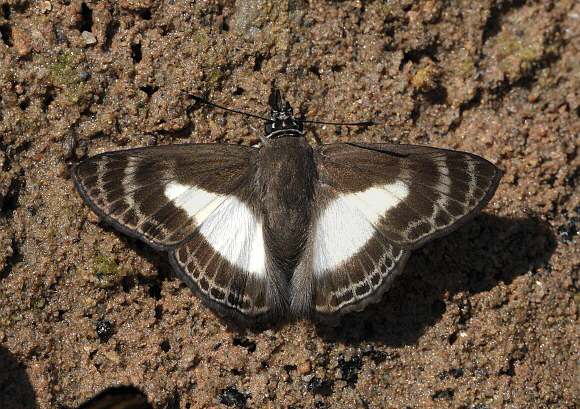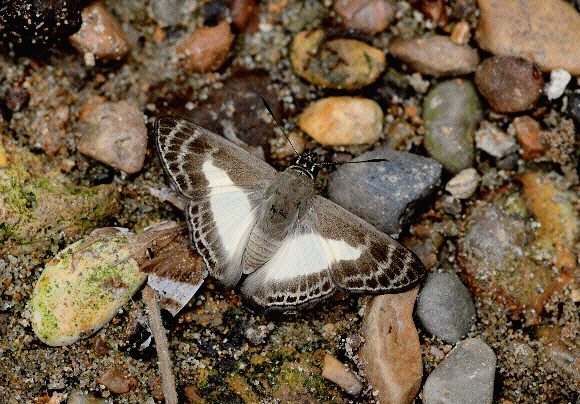
Introduction
The Pyrginae, popularly known as Flats or Spreadwings, are a cosmopolitan subfamily distributed across temperate and tropical habitats throughout the world. In the Americas there are 990 species, of which about 580 are assigned to the tribe Pyrgini.
This attractive and unusually marked Skipper is impossible to mistake for any other species. It is one of only 2 members of the genus Sophista, the other being latifasciata. In the latter the wings are far more rounded, and the white bar on the forewing extends to reach the costa.
Sophista aristoteles is distributed from Venezuela to Brazil, Peru and Bolivia.
Habitats
The butterfly is found in primary rainforest at altitudes between about 200-1800m.
Lifecycle
The lifecycle appears to be unknown. Generally, Pyrgine butterflies lay their eggs singly on either the upperside or underside of leaves. The larvae are typically dull green or brownish, with thin longitudinal lines along the back and sides, and with black shiny heads. They feed typically on herbaceous plants, but a small percentage feed on the leaves of bushes or trees. The pupae are usually dark and smooth, with the wing cases in a contrasting tone or colour. They are normally formed within silken tents formed by spinning together the leaves of the foodplant.
Adult behaviour
My only observations of this species have been of singletons imbibing moisture from rocky substrates. In Venezuela I found the species flying around bushes and settling to drink from the edge of puddles that formed on silicaceous rocks at Jasper Falls, Gran Sabana. In Peru I found it drinking from wet gravel on the bed of a small shallow stream that fed into the Rio Madre de Dios.

